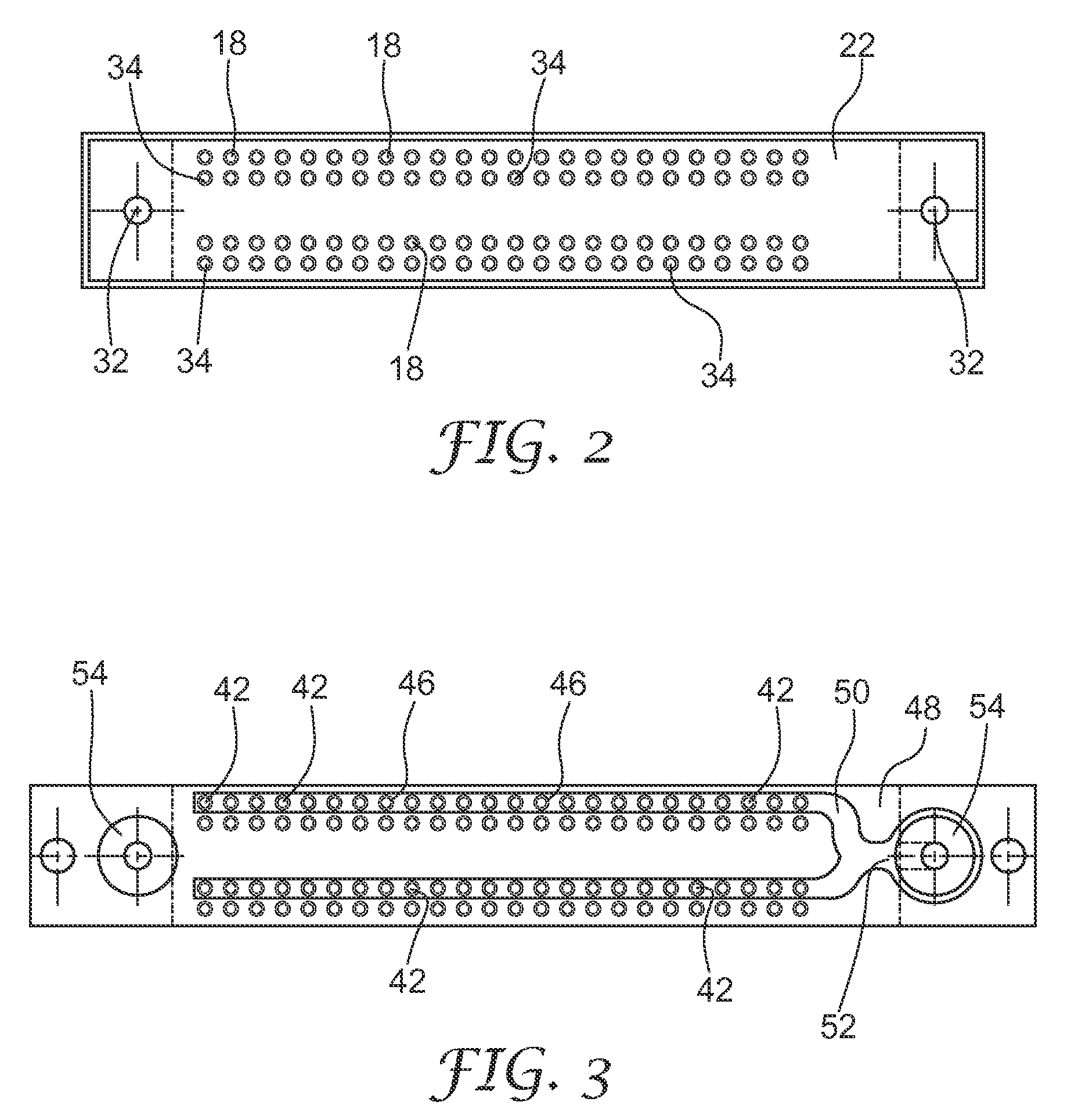Method for distinguishing a first group of wires from other wires of a multi-wire cable, test connector for use in this method and a kit comprising such a multi-wire cable and test connector
- Summary
- Abstract
- Description
- Claims
- Application Information
AI Technical Summary
Benefits of technology
Problems solved by technology
Method used
Image
Examples
Embodiment Construction
[0036]FIG. 1 shows the individual elements for identifying a first group of wires of a multi-wire cable for telecommunication purposes. In FIG. 1 there is depicted a cable harness 10 comprising a multi-wire cable 12 having twisted-pair or parallel-pair cables 14,16 connected to contact elements 18 of a (first) connector 20 comprising a shell or hood 22. The cable 12 includes an outer jacket 24 and a shielding 26 arranged within the outer jacket 24 wherein the shielding 26 and the outer jacket 24 surround the plurality of wires 14,16. Moreover, a drain wire 28 extends within the shielding 26 of the cable 12 and contacts the shielding 26. The drain wire 28 is used for electrically connecting the shielding 26 to a common potential of the first connector 20. In this embodiment this connection is performed by electrically connecting the drain wire 28 to an annular element 30 penetrated by a fastening element 32 formed as a screw for attaching and fixing the first connector 20 to a compon...
PUM
 Login to View More
Login to View More Abstract
Description
Claims
Application Information
 Login to View More
Login to View More - R&D
- Intellectual Property
- Life Sciences
- Materials
- Tech Scout
- Unparalleled Data Quality
- Higher Quality Content
- 60% Fewer Hallucinations
Browse by: Latest US Patents, China's latest patents, Technical Efficacy Thesaurus, Application Domain, Technology Topic, Popular Technical Reports.
© 2025 PatSnap. All rights reserved.Legal|Privacy policy|Modern Slavery Act Transparency Statement|Sitemap|About US| Contact US: help@patsnap.com



